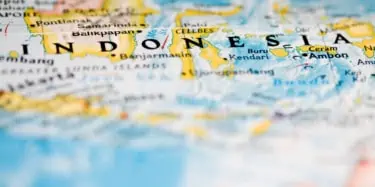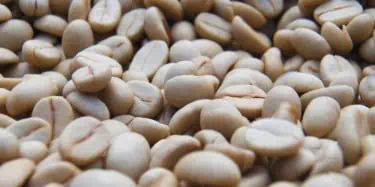What coffees do readers of Coffee Review actually drink, as oppose to read about? Are their tastes fairly similar to mine, or are they marching to some different coffee drummer? This review and next month's suggest some answers to those questions. Over the last few months readers have nominated close to two hundred coffees for review. Sometimes the reader simply delivered the name of the
What Makes Sumatra Coffees Taste The Way They Do?
Coffee aficionados often assume that coffees from various origins taste different purely because they are grown in different climates and soils or produced by different botanical varieties of Coffea arabica. Obviously both assumptions are true. However, we often overlook the influence of how coffee beans are processed, or stripped of their fruit and dried. This procedure has a key impact on
Sumatras
It is unlikely that anyone would put Sumatra up as the finest of the world's coffee origins, but many of us would select it as one of the most challenging and interesting. That challenge and interest is situated right in the cup, by the way. You don't need to glamorize traditional Sumatras with false travelogue romance. Not only does every lot of traditionally processed Sumatra taste different
A Roast Master’s Perspective on Dark Roasts: John Weaver
When Ken asked me to do this tasting with him I agreed with some trepidation. I was afraid that my honest and unbiased opinion might be viewed as skewed because of my position as head roaster at Peet's Coffee & Tea. However, my intention is to help. Everything involved with coffee is interesting to me, and blind tasting coffee has always been an enjoyable and valuable experience. For
Dark Roasts
Besides providing readers with some recommendations for fine dark-roast coffees, I set up this co-cupping with John Weaver of Peet's Coffee to find out whether the thin-bodied, burned dark roasts I so often taste from American roasters are my problem or the coffees' problem. By all measures, John Weaver ought to know about dark roasts. For the past 23 years he has been roast master of the
Ethiopias and Kenyas
Ethiopia and Kenya are favorite origins for attacking coffee complacency. Think all coffees taste the same? Try a Kenya that tastes as though it were spiked by a fine cabernet, or an Ethiopia Yirgacheffe that tastes like lemon blossoms on a balmy evening. Arguments can be made that other coffee origins produce a more classic cup than Ethiopia or Kenya, but no other origins come close to either
India Coffees
Judges at the recent Fine Cup Award for India coffees experienced the jolt that has become usual at such competitions: Among the many excellent coffees that perfectly fulfilled their expectations of what a wet-processed India coffee should be -- low acid, sweet, mild, perhaps with just a hint of flowers -- two coffees broke through the stereotype completely, with powerful, complex, high- toned
Decaffeinated Coffees
The fact that I asked over fifteen roasters to send me decaffeinated coffees for review and only a handful actually did is one indication of how little interest roastmasters and coffee managers take in decaffeinated coffees. But it seems to me that the drinker of decaffeinated coffee deserves an even better cup than those of us who can fall back on raw stimulation to justify our
Fun without the Buzz: Decaffeination Processes and Issues
Coffee is decaffeinated in its green state, before the delicate oils are developed through roasting. Hundreds of patents exist for decaffeination processes, but only a few are actually used. The trick, of course, is how to take out the caffeine without also removing the various components that give coffee its very complex flavor. Traditional or European Process In the process variously called
On Matching Roast to Bean
Kevin Knox writes: In tasting through the Costa Rican samples for the June 2002 article Cupping with Ken Davids (and Kevin Knox): Costa Ricas, I was struck by the fact that while the samples represent a broad range of roasters, the range of roasts applied to the coffees was exceedingly narrow, ranging from moderately dark traditional full city (chestnut brown, no oil) in a few cases to quite dark
Costa Rica Coffees
Three issues weave their way through this report of my collaborative June cupping of Costa Rica coffees with leading coffee buyer and writer Kevin Knox. The first: Based on our limited sampling, what kind of coffee experience are this year's Costa Ricas likely to deliver to the consumer? The second: Is the cupper wearing his new clothes? How much agreement in language and taste can we expect
Current Crop Brazils
Brazil is coming up in the world of specialty coffee. It probably always was up in Europe, where Brazil's finest coffees, sweetly rounded and low in acidity, anchored the continent's leading blends. In the United States, however, Brazil was mainly known for producing vast volumes of cheap, mass-processed arabica coffees that found their nameless way into supermarket cans and bottles. Some
A New Brazil Cup?
Not too long ago, Brazil coffees seldom made it onto American specialty menus. If they did they were identified rather generically as "Santos," a term describing the higher grades of Brazil coffees, usually from the growing regions of Mogiana and Sul de Minas. The Santos cup, long a mainstay in better-quality blends in Europe and the eastern part of the United States, is typically low-acid,
Espressos for Cappuccino and Caffe Latte
Espresso is the most demanding of all systems for brewing coffee. Not only does the slightest error in brewing doom the cup, but this system, which extracts the flavor elements of a serving of coffee in 15 to 20 intense seconds, exaggerates any flaw or imbalance in the coffee itself. So an espresso blend must be subtle and balanced. On the other hand, espresso coffee in the United States is
Brewing Espresso at Home
Coffee is a beverage that invites, even demands, obsession, and, of all coffee acts, brewing espresso can be the most obsessive. Two or three more seconds of dribbling out of the brewer can dramatically alter the cup, and the finest espresso coffee in the world can be utterly ruined by one or two careless gestures. Every time I publish a review of espresso coffees I receive emails, not about the
Roast-and-Ground and Whole-Bean Supermarket Coffees
At one time certainly when I wrote my first coffee book 25 years ago the distinction between commercial and specialty was clear. Commercial coffees came in branded cans at supermarkets and specialty coffees were whole beans sold in bulk at obscure stores in college towns with dark wood counters and burlap on the wall. Today, of course, that distinction is blurred. Many specialty roasters, large
The Robusta Fuss
For those who just walked into the coffee movie, most of the coffee grown commercially in the world comes from trees of two species: arabica and robusta. Coffea arabica is the original commercial species of coffee, the one that Kaldi's tiresomely celebrated goats ate, the species that first sold human beings on the pleasures of the cup. Robusta, the popular name for Coffea canephora, is a
Konas and Other Hawaiis
Kona coffee, grown on a narrow band of hard-scrabble lava terrain that meanders along the mountainside above the resort complexes and splendid western coastline of the Big Island of Hawaii, is a singular coffee origin in many respects. A combination of demand and scarcity have made one of the worlds most expensive coffees. It is a favorite among American and Japanese consumers, who associate it
Are Konas Worth It?
Or, to be more specific, is the actual coffee experience inside a Kona bag worth around $30 per pound, three to four times the price of the coffee experiences contained inside other bags? Most coffee professionals dont think so. Kona bashing is less prevalent in the specialty coffee industry than it was some years back, but you can still detect the barely concealed sneers behind the
Mexico, Nicaragua, El Salvador, Honduras
When we travel the symbolic roads of specialty coffee south through Mexico and Central America, two origins straddle those roads like overachieving giants: Guatemala and Costa Rica. The other coffee origins of the region - Mexico, El Salvador, Honduras, Nicaragua, Panama - make far less frequent appearances on specialty menus, although Mexico and Nicaragua in particular supply several





























